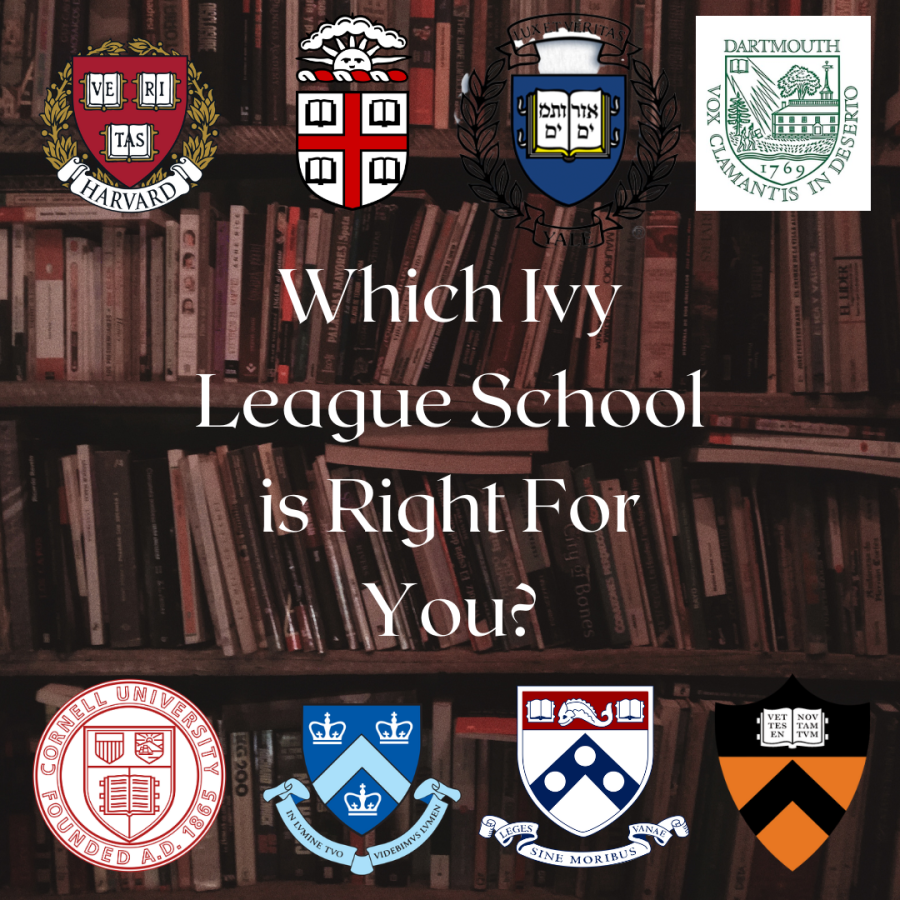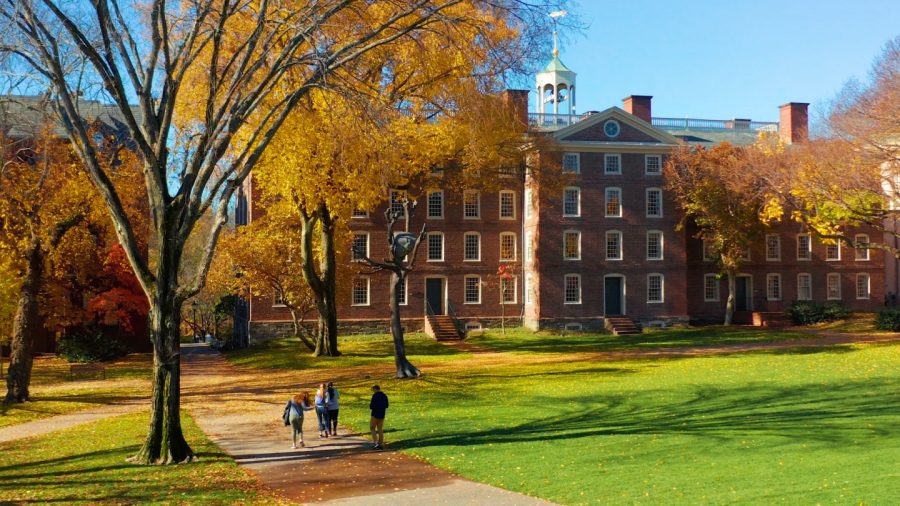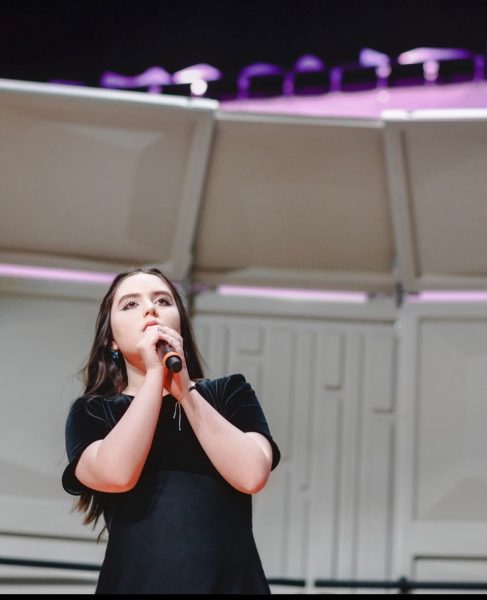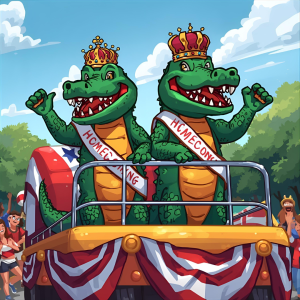Which Ivy League is For You?
April 27, 2023
College acceptances are all anyone can talk about recently, and the lucky few who have gotten into Ivy Leagues this year are sparking curiosity in rising seniors about these famous schools. What makes them Ivy Leagues? Are they all pretty much the same? There are a lot of questions those looking into the universities may have, and it’s a good idea to narrow down the list of Ivies you plan to apply to if you’re interested in going to one of these top schools. Here are some commonly asked questions about Ivy Leagues and descriptions of the schools’ atmospheres, academics, and structures to find the best fit(s) for you:
Ivy League FAQs
What are Ivy Leagues? The ‘Ivy League’ is a group of eight universities in the Northeastern United States that have a reputation for high scholastic achievement and social prestige. The association of “ivy” with these universities most likely began in 1933 when the term was utilized by Stanley Woodward when he wrote in the New York Tribune: “A proportion of our eastern ivy colleges are meeting little fellows another Saturday before plunging into the strife and the turmoil.” This line was referencing the football season of the schools, which included Harvard, Princeton, Columbia, Yale, the United States Military Academy, and the United States Naval Academy, which had already had long-standing traditions in their competitions. Additionally, ‘ivy’ is a plant that can climb the walls of buildings extensively for years and cover walls with its brush. For this reason, Woodward likely used the term “ivy colleges” as a sort of double entendre for the excelling nature of ivy (and the students of these schools), and because of the tradition done in these universities called “planting the ivy.” This was a tradition in the 1800s where students would plant ivy around their schools’ campuses. UPenn, for example, planted ivy near each building in the springtime, and the day was known as “Ivy Day.”
What schools are Ivy Leagues? The eight current Ivy League Schools are Brown University, Columbia University, Cornell University, Dartmouth College, Harvard University, The University of Pennsylvania, Princeton University, and Yale University.
Are they all private schools? Yes, all of the Ivy Leagues are private schools.
Are they hard to get into? Yes. The Ivy League Schools have an average acceptance rate of just above 9%, making them among the most selective schools in the world.
What is the best Ivy League School? The Best National University Rankings ranks Princeton as #1 on the basis of student-faculty ratios, average federal loan debt of graduates, majors offered, tuition policies, student body demographics, and campus life. Though, Harvard is the most selective Ivy, with the lowest acceptance rate of any Ivy, 4%.
What Makes Each Ivy Unique
Though grouped together for their prestige and world-class academics, the eight Ivy League schools are all very distinct from one another in terms of their values, curriculum styles, locations, what majors they prioritize, campus sizes, and of course, much more.
Brown University
Brown was founded in 1764 and is located in Providence, the capital city of Rhode Island. Famous for its commitment to research and open curriculum, it has an acceptance rate of 5.5%, and its average scores are 1440-1550 for the SAT and 32-35 for the ACT. It is prestigious and selective on the basis of academics but is praised for being more open-minded when considering applicants, and for doing so holistically.
Being located in the small city of Providence, RI, students who attend Brown aren’t really living on an urban scene like is desired by many prospective Ivy League students. Brown’s campus is a rural haven within the city, located in a scenic area with lots of green grass, tall trees, and historic buildings. If students are itching for that city feel, Boston is an only hour-long bus ride away.
Brown is a great school for those looking for a more liberal education, as Brown is renowned for its open curriculum structure in which students have few required courses and are able to create their own personalized and flexible courses of study, allowing them to take advantage of the variety of rigorous courses. CollegeVine even writes that “students at Brown can take as many classes as they want Pass/Fail, essentially making grades optional. In general, the academic culture at Brown encourages exploration and experimentation, and it is specifically designed to allow students to branch out to areas outside their majors without fear of their GPAs suffering as a result.” This system creates a less competitive, and therefore less tense, and more community-oriented school environment at Brown University.
Something else that Brown is famous for is its progressiveness and diversity. The university facilitates productive discussions about the issues we face in our world today, welcoming a variety of perspectives and opinions with a seat at the table. The university administration prioritizes inclusivity initiatives to create a welcoming campus for all, which is why Brown regularly ranks high on lists of the happiest colleges. Brown also encourages immersing its students in a variety of cultures, granting them free access to museums and cultural centers in Providence.
If this distinct campus culture of freedom, unconventionally, independence, and inclusion appeals to your interests regarding your higher education, Brown University is an Ivy that you should consider applying to.
Columbia University
Columbia University was founded in 1754 in New York, New York. The school has an acceptance rate of 4.1%, with its average SAT scores being 1480-1560 and average ACT scores being 33-35. Columbia is renowned for its distinctive Core Curriculum, research facilities, and intimate learning environments.
Columbia University is located in NYC’s Morningside Heights neighborhood of Manhattan, between the Upper West Side and West Harlem. This area, despite being a bustling urban center, is referred to as a sort of college town, as it’s also home to Barnard College and the Manhattan School of Music. If you have dreams of studying in the big city, Columbia would be a great pick, as it’s right in the middle of the action. The campus is home to buildings with stunning architecture and is walkable, giving the school a neighborhood feel within such a lively city.
The undergraduate experience at Columbia University is shaped by its Core Curriculum, which is a set of classes all students attending their liberal arts college (Columbia College) are required to take. Students attending their School of Engineering and Applied Science are also required to take some core classes, but the requirements aren’t as limiting. The Core Curriculum places a heavy emphasis on classical literature and writing skills, producing well-rounded, capable graduates.
Columbia often attracts students who are avidly interested in politics due to the area’s rich history, so the university is perfect for students passionate about their political beliefs. The school being located in New York City is also a big pull factor for a lot of students from different countries, making Columbia the Ivy League with the highest percentage of international students. Columbia is also one of the most racially diverse Ivies, with 50% of undergraduate students identifying as people of color. This blend of students from a variety of backgrounds coupled with the exciting environment of NYC is perfect for a prospective student who is looking to step out of their comfort zone and become a more experienced citizen.
Cornell University
Cornell University is the youngest Ivy League school, being founded in 1865 in Ithaca, New York. The average SAT scores for Cornell are 1400-1560 and the average ACT scores are 32-35. Cornell is the easiest Ivy League to get into, but not by much, with an acceptance rate of about 8.7%. It was the first university to offer degrees in Journalism, Veterinary Medicine, and Electrical Engineering, programs that are still going strong at Cornell today.
Cornell’s campus is a stunning location encased in natural elements, and it has the largest campus of all of the Ivies. Its buildings provide a mix of historic and contemporary architecture that creates a homey feel even in the midst of such a large school. The city of Ithaca is full of nature’s marvels, being right on Cayuga Lake in New York’s Finger Lakes region. It’s also home to multiple stunning waterfalls, and Cornell itself has their own botanic gardens.
Cornell’s undergraduate experience is made distinct by its seven different undergraduate schools. Among these are its highly-ranked engineering and agriculture colleges, as well as the School of Hotel Administration. Cornell’s variety of specialized and unconventional programs in a multitude of fields grants undergraduates the chance to pursue an education tailor-made to their interests. Home to 80 majors and 122 minors, Cornell is a modern pioneer in education.
Life at Cornell is defined by a culture of critical thinking, self-discovery, and embracing all. Students are surrounded by the wonders of nature, enhancing their focus and inspiring their creativity. With the largest undergraduate enrollment of any Ivy, Cornell adopts the feel of a larger public university. That’s not where the similarity ends either, as Cornell has quite a prevalent element of Greek life, and is home to over 60 fraternities and sororities, of which 1/3 of the student population belongs to. Cornell isn’t your typical old-school, small, urban Ivy, but is more characterized by the notion of new-age education that caters to the needs and interests of the younger generation. If Cornell’s public school feel and nature scene appeal to you, consider adding it to your list of potential Ivies.
Dartmouth College
Dartmouth College was founded in 1769 in Hanover, New Hampshire. Dartmouth has an acceptance rate of about 6.2%, around average for the Ivies, with their average SAT scores ranging from 1440-1560 and their average ACT scores being 32-35. This university is known for its strong undergraduate focus and research-oriented academia, while also having a reputation of being the ‘Party Ivy’ due to its populous Greek life. That said, Dartmouth College was ranked the third highest university in the nation in “total reports of rape” in 2014, having 42 reports of rape on their main campus. Students at Dartmouth also have been known to engage in dangerous kinds of hazing and alcohol abuse, leading to multiple past police raids of the college. Many attribute this to the big scene of Greek life at Dartmouth, causing many to reconsider applying to or attending the school.
Dartmouth’s campus in Hanover, New Hampshire has a small-town feel in its suburban location, with picturesque natural scenery that attracts outdoorsy students. Dartmouth’s website writes that its campus is “renowned throughout the world for its mountain vistas, towering pines, and pastoral setting in the deep green Upper Connecticut River Valley.” The school’s setting is undoubtedly a pleasant place to study and socialize, enhancing the Ivy League experience Dartmouth provides. There’s even the well-known Baker-Berry library, which students say resembles the library at Hogwarts.
Dartmouth is largely characterized by its focus on its undergraduate students, providing them with the most attention and resources. Despite being home to four graduate schools, undergrads need not worry about being put second to grad students. Dartmouth also has a unique grading period system, as it does not follow the common two-semester system but the four-quarter system, having three grading periods in a typical school year and four year-round. It should be noted that the school is small compared to other Ivies, with a total undergrad enrollment of around 4,000 students. This small class size and the secluded location of Hanover make for a very tight-knit community at Dartmouth.
With its focus on the undergraduate experience, Dartmouth makes it a point to offer many amenities and resources to its students. The university’s splendid housing and dining are renowned, and there are many healthcare, academic, psychological, and career resources open to all students at the school. In addition to Dartmouth’s countless clubs, activities, and student organizations, there really isn’t a need to leave the campus, especially for entertainment. Dartmouth even writes on its website that “a common complaint is an insufficient time to enjoy them all.”
If you feel like Dartmouth’s benefits outweigh the risks associated with its Greek life, and think that this smaller Ivy surrounded by natural elements is what you’re looking for, consider applying.
Harvard University
Harvard University was founded in 1636 in Cambridge, Massachusetts and the school has three main campuses in Cambridge, Allston, and Boston. Harvard, perhaps the most famous of the Ivy Leagues, has one of the most exclusive acceptance rates of around 4%. Average SAT scores range from 1460 to 1580, and average ACT scores are 33-35.
Harvard is surrounded by many other renowned colleges, such as MIT, Boston College, Boston University, and more, allowing for a bustling community of young people seeking to make their way in the world. Harvard’s locations are key, allowing its students some of the best opportunities to network with peers, faculty, and employers. Students can enjoy the campus’s proximity to Boston and all of the action and resources of the big city while also being able to have access to other parts of the campus’s smaller and quieter urban settings. Harvard’s campus in Cambridge is imprinted in the minds of many, with crimson brick buildings surrounding grassy squares with large, far-reaching trees, a perfect place to lay down a blanket and study.
In contrast to some Ivies that feature more lenient, open curriculums with few requirements, Harvard has its own rules. Harvard has a set of general education requirements that all freshmen must take in addition to the required courses for their major. This is designed to make Harvard students well-versed in areas that aren’t just limited to their intended courses of study. Though, this isn’t to say students aren’t afforded a good amount of freedom in pursuing their academic interests, as Harvard provides a multitude of undergraduate research opportunities that students can take advantage of. Harvard’s state-of-the-art resources and world-renowned faculty members also make for little criticism about the school’s course requirements.
Harvard also has a distinct system of student housing. There are 12 residential houses that students are placed into after their sophomore year, each having its own culture and personality, similar, once again, to that of Hogwarts. Students remain living in the same house until graduation, allowing them to form tight-knit communities, and facilitating the social scene at Harvard. This is unique from other schools, and even other Ivies, and really gives the school that special, exclusive feel that many prospective students look for. If you feel that Harvard’s location and culture is the school environment that you seek, definitely put the university on your list.
University of Pennsylvania
The University of Pennsylvania was founded in 1740 in Philadelphia, Pennsylvania, and has an acceptance rate of about 5.9%. The university has average SAT scores of 1450-1550 and average ACT scores of 33-35, typical for most Ivies.
UPenn is set in the University City of Philadelphia, which provides students with an urban setting with plentiful opportunities for internships, employment, and cultural immersion. The city of Philadelphia is also home to rich American history, with sights such as the Liberty Bell, Independence Hall, and other Revolutionary War relics to behold. UPenn’s campus is made up of beautiful historical buildings on its sprawling 299 acres.
UPenn has four undergraduate schools, The College of Arts & Sciences, The Wharton School of Business, The School of Engineering and Applied Science, and The School of Nursing. Penn’s business and nursing schools set them apart from other Ivies, as the programs are structured more liberally. Though, The College of Arts & Sciences’ curriculum structure is more geared towards instruction in various disciplines and skill sets, and is a more practical and traditional kind of education. For undergrads, there are over 90 majors to pursue at these four schools, and all facilities are cutting-edge. The university defines the education it provides as informed by “inclusivity, intellectual rigor, research, and the impetus to create new knowledge to the benefit of individuals and communities around the world.”
At UPenn, Greek life is more prominent than it is at some other Ivy League schools, but sororities and fraternities don’t completely make up the social scene. Students looking for ways to socialize beyond Greek life can get involved in one of UPenn’s 450+ student organizations or the College House system, similar to Harvard’s housing system, which has 12 distinct communities where students can network with like-minded peers throughout the entirety of their stay at UPenn. UPenn also has many spiritual and religious organizations where students can feel at home and makes a point to be inclusive to all belief systems, which is a distinctive quality of Penn among the other Ivies. There is always something to do at the university, with on-campus museums, live arts performances, historic school traditions, athletics, and more.
If the University of Pennsylvania’s historic location, vibrant urban culture, and diverse educational opportunities sound like what you’re looking for, consider adding UPenn to your roster.
Princeton University
Princeton University was founded in 1746 in Princeton, New Jersey, and has an acceptance rate of about 4.4%, making it one of the most highly exclusive Ivy Leagues. As previously mentioned, Princeton was ranked the #1 school by The Best National University Rankings on the basis of student-faculty ratios, average federal loan debt of graduates, majors offered, tuition policies, student body demographics, and campus life. Princeton’s average SAT scores are from 1460-1570 and average ACT scores are around 33-35.
Princeton is known as the most stereotypical Ivy League school, with its grand campus and prestigious reputation, and what’s more is it’s actually home to the largest amount of real ivy of any Ivy League’s campus. It spans over 600 acres, and features nearly 200 buildings of various architectural styles like Gothic, neoclassical, contemporary, and much more. The campus is walkable and bikeable, but also offers TigerTransit shuttle busses to students, so it’s suitable for all the ways anyone may need to get around. The town of Princeton, New Jersey is also home to a lot of rich American Revolution history much like UPenn, and students at Princeton University would have no shortage of sites and museums to visit throughout their school career.
Similar to Dartmouth, Princeton places a huge emphasis on undergraduate education. The university offers two degrees: A.B. for liberal arts students and B.S.E. for students of engineering and applied science. These programs both include general education requirements and a focus on independent research. The required courses give Princeton a diversified liberal arts education, producing eventual graduates who are Renaissance men and women and well-versed in various areas of study. Princeton’s website writes, “As a student, you benefit from the extraordinary resources of a world-class teaching and research university, and our low student-to-faculty ratio means you are able to develop close working relationships with professors who are leaders in their fields.” The university also emphasizes how its curriculum is based on the fundamentals of learning, creativity, innovation, and collaboration, and defines its educational model as one in which the student will explore many disciplines but also develop a deep understanding in one area of concentration.
Student Life at Princeton is similar to that of most Ivies: defined by the school’s clubs and organizations, culturally immersing activities of the surrounding area, Greek life, and distinct housing communities. Although, one social activity at Princeton sticks out among the rest: its famous eating clubs. Princeton’s eating clubs are private social organizations, many with a meticulous application process called “bickering.” If you’re a foodie, consider how this may appeal to you as a prospective student. Princeton also employs, in addition to typical dorm-style arrangements, a system of housing communities based on certain interests, so that students can room with like-minded individuals who can relate to one another and enjoy each other’s company.
If you feel that Princeton’s curriculum style, beautiful and historical campus, and culinary-centered student groups are what you’re looking for, consider putting Princeton on your list of Ivies to apply to.
Yale University
The last Ivy League School is Yale University, located in New Haven, Connecticut. Yale has an acceptance rate of about 5.3%, with average test scores being 1470-1560 for the SAT and 33-35 for the ACT. The coastal city of New Haven is home to many opportunities for social, cultural, and professional experiences, and is located about two hours away from New York City if Yale students are eager for even more action. Yale’s campus, like all of the Ivies, is a sight to behold. Its beautiful Gothic architecture and natural surroundings make it one of the most stunning schools in the world. Yale’s residential dorms are even described as “probably the most lavish and encompassing college dorms in the U. S.”
For some information about Yale’s academics, it’s important to know that all undergraduates attend Yale College, the liberal arts college within the university. Yale University has flexible general education requirements, less stringent than those of Princeton or Columbia. Yale has come to be known for its exceptional English and creative arts programs, and therefore writing is an important part of its undergraduate curriculum. There are more than a hundred writing courses to choose from concerning a wide variety of subjects. Yale writes that they “provide students with an immersive, collaborative, and inspiring environment where they can develop a broadly informed, highly disciplined intellect that will help them be successful in whatever work they finally choose,” and the facilities and instructors that Yale calls their own are certainly a testament to this.
As for student life, particularly undergraduate student life, much of the socialization among Yale attendees is defined by the residential college system that is reminiscent of Harvard’s and Princeton’s. Yale students are able to live in tight-knit communities throughout their sophomore, junior, and senior years, which allows them to make connections with their peers and professors, and also live and thrive in a space best attuned to their personal interests and ambitions. CollegeVine writes about another, quite Ivy-esque social feature of Yale: “As one of the oldest institutions of higher education in the country, Yale also has a wealth of time-honed organizations and institutions, including several purported “secret societies,” all of which contribute to the remarkable pride Yale students and alumni take in their school.” If joining a secret, ancient, exclusive (and admittedly, pretentious) club at your school and becoming part of this culture of prestige appeals to you, consider applying to Yale University.
Conclusion
All in all, these eight Ivy League schools are individually special and unique in their own regard. Each one is attuned to the interests and needs of different prospective Ivy students, hence why it’s a good idea to get familiar with the values of each one and pick your top few matches before writing out eight whole applications. College applications are intimidating and lengthy, so if you’re interested in applying to some Ivy League Schools but don’t know which ones to devote your attention to, look further into the ones that have piqued your interest as you’ve been reading and consider applying. For all you know, you could be one of the lucky few to get admitted to some of the best universities in the world.








